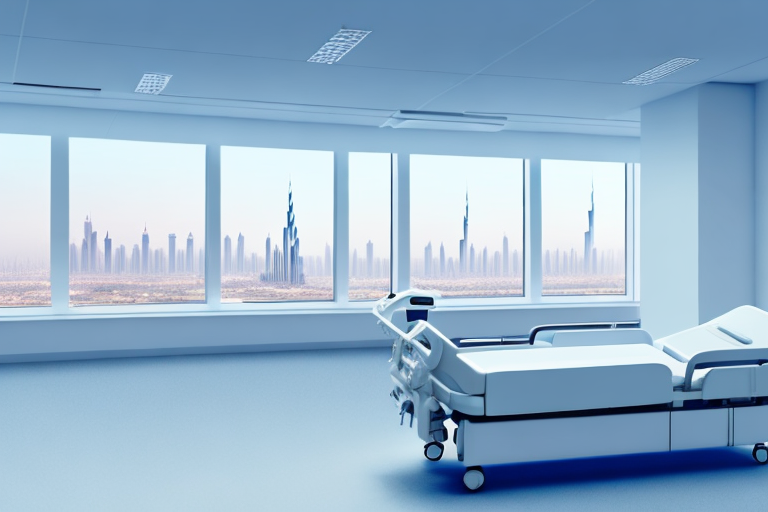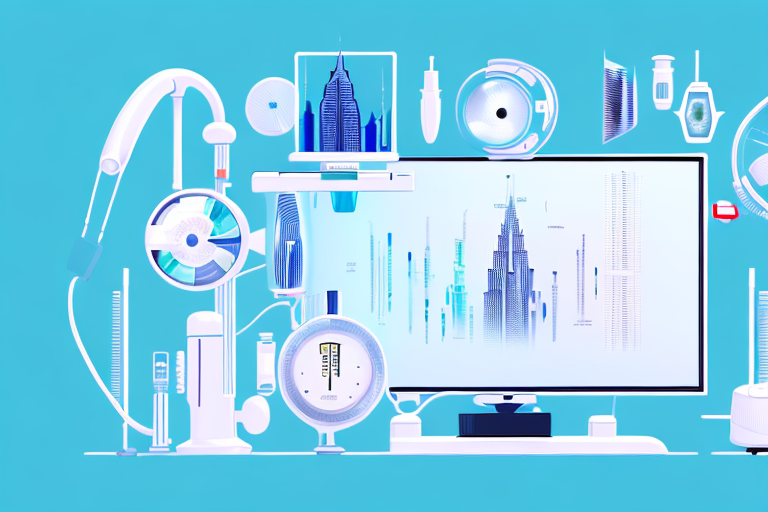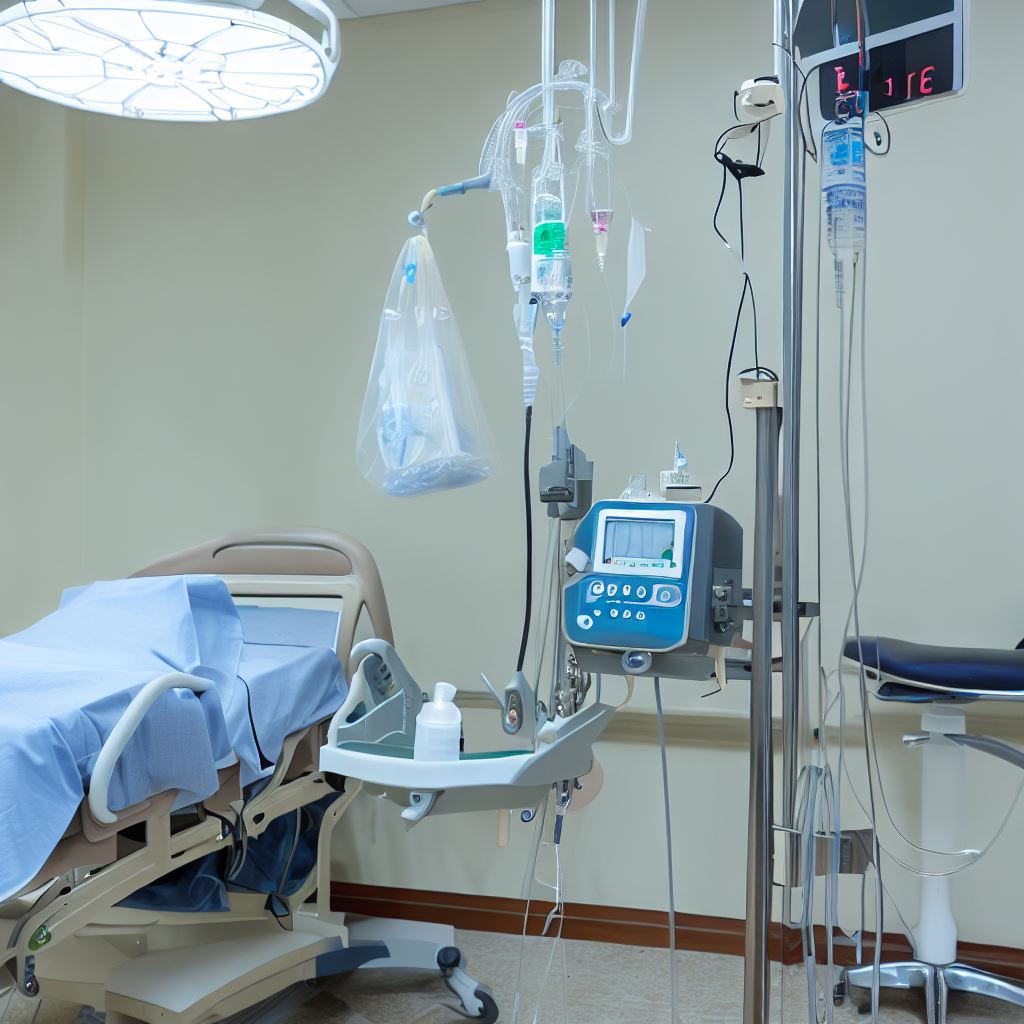In today's rapidly advancing world of healthcare technology, ultrasound has become an essential tool in diagnosing and monitoring various medical conditions. If you are in the market for the best ultrasound supplier in Dubai, this ultimate guide will provide you with all the information you need to make an informed decision. From understanding ultrasound technology to comparing suppliers and weighing the pros and cons of purchasing or leasing equipment, we've got you covered.
Understanding Ultrasound Technology
Ultrasound technology utilizes high-frequency sound waves to create detailed images of the body's internal structures. These images help healthcare professionals evaluate and diagnose a wide range of conditions, from pregnancy to cardiovascular issues and everything in between.
Ultrasound technology is non-invasive, safe, and painless, making it a preferred diagnostic tool for many medical professionals. It allows for real-time imaging and the ability to capture moving images, providing valuable insights into a patient's health.
But how exactly does ultrasound technology work? When an ultrasound machine is used, a transducer emits high-frequency sound waves into the body. These sound waves then bounce back, creating echoes that are picked up by the transducer. The echoes are then converted into images that can be viewed on a monitor.
One of the key advantages of ultrasound technology is its versatility. It can be used to examine various parts of the body, including the abdomen, pelvis, heart, blood vessels, and even the musculoskeletal system. This makes it a valuable tool for diagnosing a wide range of conditions.
The Role of Ultrasound in Healthcare
Ultrasound plays a crucial role in healthcare, aiding in the diagnosis and monitoring of various medical conditions. It is commonly used in obstetrics to monitor the development of a fetus during pregnancy. The ability to visualize the fetus in real-time allows healthcare professionals to assess its growth, detect any abnormalities, and ensure the overall well-being of both the mother and the baby.
Additionally, ultrasound technology is used to detect and diagnose conditions such as gallstones, kidney stones, tumors, and abnormalities in the heart and blood vessels. By providing detailed images of these structures, ultrasound helps healthcare professionals identify the presence and location of these conditions, guiding further treatment decisions.
Furthermore, ultrasound-guided procedures, such as biopsies and drainages, have revolutionized the field of interventional medicine, allowing for precise and minimally invasive treatments. By using ultrasound imaging to guide the placement of needles or catheters, healthcare professionals can target specific areas with greater accuracy, reducing the risk of complications and improving patient outcomes.
Different Types of Ultrasound Machines
There are several types of ultrasound machines available, each catering to specific medical specialties and imaging needs. These include portable ultrasound machines, cardiac ultrasound machines, and 3D/4D ultrasound machines.
Portable ultrasound machines offer convenience and flexibility, especially for medical professionals who require mobility, such as those working in emergency departments or remote locations. These compact devices allow for on-the-spot imaging, enabling quick assessments and timely interventions.
Cardiac ultrasound machines, on the other hand, are designed specifically for evaluating the heart's structure and function. These machines use specialized transducers and imaging techniques to provide detailed images of the heart's chambers, valves, and blood flow. They play a crucial role in diagnosing and monitoring various heart conditions, such as heart murmurs, valve abnormalities, and heart failure.
Lastly, 3D/4D ultrasound machines provide a more detailed and realistic view of the fetus during pregnancy. These machines use advanced imaging techniques to create three-dimensional images of the developing fetus, allowing expectant parents to see their baby's features in greater detail. The addition of the fourth dimension, time, enables the visualization of the baby's movements, providing a unique bonding experience for parents-to-be.
In conclusion, ultrasound technology is a powerful diagnostic tool that has revolutionized healthcare. Its non-invasive nature, real-time imaging capabilities, and versatility make it an invaluable asset in the diagnosis, monitoring, and treatment of various medical conditions. Whether it's monitoring the development of a fetus, detecting abnormalities in the heart, or guiding minimally invasive procedures, ultrasound technology continues to advance the field of medicine and improve patient care.
Criteria for Choosing an Ultrasound Supplier
When selecting an ultrasound supplier, there are several crucial factors to consider to ensure you receive reliable equipment and exceptional service.
Ultrasound technology has revolutionized the field of medical imaging, providing non-invasive and real-time visualization of internal structures. As the demand for ultrasound machines continues to grow, it is essential to carefully evaluate suppliers to make an informed decision.
Quality of Ultrasound Equipment
The quality of the ultrasound equipment is of utmost importance. Look for suppliers that offer high-quality machines with advanced imaging capabilities, ensuring accuracy and precision in diagnosis.
Consider the brand and model of the ultrasound machines offered by each supplier. Well-known and reputable brands often indicate superior quality and reliability. However, it is also essential to assess the specific features and specifications of the machines to ensure they meet your specific needs.
Advanced imaging technologies, such as 3D and 4D ultrasound, can provide enhanced visualization and improve diagnostic accuracy. Additionally, features like adjustable frequency, multiple transducer options, and ergonomic design can contribute to a better user experience.
Supplier's Reputation and Reliability
Research the reputation and reliability of the ultrasound supplier in the market. Read customer reviews and testimonials to gauge the satisfaction level of their existing clients. A supplier with a strong track record is more likely to provide exceptional service and support.
Consider factors such as the supplier's experience in the industry, their client base, and any certifications or awards they have received. A supplier with a long-standing presence and a large customer base indicates trust and reliability.
Furthermore, it is crucial to assess the supplier's financial stability and their ability to meet your long-term needs. A financially stable supplier is more likely to invest in research and development, ensuring that you have access to the latest advancements in ultrasound technology.
After-Sales Support and Service
Choosing a supplier that offers comprehensive after-sales support and service is vital for the smooth operation of your ultrasound equipment. Ensure that the supplier provides timely maintenance, repairs, and technical support to minimize downtime and ensure maximum efficiency.
Consider factors such as warranty coverage, response time for service requests, and availability of spare parts. A reliable supplier should have a dedicated support team readily available to assist you whenever needed.
Additionally, inquire about the supplier's training programs and educational resources. Proper training for your staff can optimize the use of the ultrasound equipment and enhance the quality of patient care.
Some suppliers may also offer value-added services, such as remote diagnostics and software updates, to ensure that your ultrasound machines are always up-to-date and functioning optimally.
By carefully evaluating the quality of ultrasound equipment, the reputation and reliability of the supplier, and the after-sales support and service provided, you can make an informed decision when choosing an ultrasound supplier. Remember that investing in a reliable and reputable supplier will not only benefit your practice but also improve patient outcomes.
Top Ultrasound Suppliers in Dubai
Dubai boasts a wide range of ultrasound suppliers, each offering their unique products and services. Here, we provide an overview of some of the leading ultrasound suppliers in the city.
Overview of Leading Suppliers
Supplier A: With a strong reputation for quality products and excellent customer service, Supplier A offers a comprehensive range of ultrasound machines catering to various medical specialties. They are known for their innovative technology and commitment to customer satisfaction.
Supplier B: Specializing in portable ultrasound machines, Supplier B provides cutting-edge equipment that combines mobility and imaging excellence. Their machines are widely acclaimed for their user-friendly interface and reliability.
Comparing Supplier Offerings
When comparing supplier offerings, consider factors such as pricing, availability of specific ultrasound machines, and additional features or accessories provided. Request demos or trials to assess the usability and image quality of the machines.
Additionally, seek recommendations from fellow healthcare professionals and experts in the field to gather valuable insights into each supplier's performance and customer satisfaction levels.
Purchasing vs Leasing Ultrasound Equipment
When it comes to acquiring ultrasound equipment, you have the option to either purchase or lease the machines. Both approaches have their advantages and considerations.
Pros and Cons of Purchasing
Purchasing ultrasound equipment provides long-term ownership and full control over the machines. This allows for customization and flexibility in terms of settings and protocols. However, purchasing requires a significant upfront investment and entails responsibilities for maintenance and repairs.
Furthermore, technology advancements and upgrades may render purchased equipment outdated over time, necessitating additional investments in the future.
Pros and Cons of Leasing
Leasing ultrasound equipment offers flexibility and cost-effectiveness. It allows you to access the latest technology without a large upfront expense. Leasing agreements often include ongoing service and support, minimizing additional maintenance costs.
However, leasing involves periodic payments, and you may not have full ownership or control over the equipment. Leasing terms and conditions vary, so carefully review the terms of the lease agreement before making a decision.
Maintenance and Care of Ultrasound Equipment
Maintaining and caring for your ultrasound equipment is essential to ensure optimal performance and longevity.
Regular Maintenance Checks
Schedule regular maintenance checks with the supplier or a qualified technician to identify any issues or potential problems. Regular maintenance helps detect minor faults and allows for timely repairs, minimizing downtime and improving the lifespan of your equipment.
Follow the manufacturer's recommendations regarding maintenance intervals and procedures. Keep a record of the maintenance checks and any repairs conducted for future reference.
Cleaning and Sterilization Procedures
Proper cleaning and sterilization of ultrasound equipment is critical to prevent the spread of infections and maintain a safe and hygienic environment. Follow the recommended cleaning procedures provided by the manufacturer.
Use approved cleaning agents and disinfectants to sanitize the equipment after each use. Ensure that all accessories, such as probes and cables, are cleaned thoroughly and stored properly to prevent damage.
Conclusion
Choosing the right ultrasound supplier in Dubai is crucial for obtaining reliable and high-quality equipment. Consider factors such as the supplier's reputation, the quality of equipment offered, and the level of after-sales support and service provided.
Deciding whether to purchase or lease ultrasound equipment depends on your specific needs and financial considerations. Regular maintenance and proper care of the equipment will ensure its optimal performance and longevity.
By utilizing this ultimate guide, you are equipped with the knowledge and tools to make an informed decision and find the top ultrasound supplier in Dubai that best meets your healthcare facility's needs.







